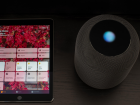 I’ve had my iPhone for about five months. I love it. Has it changed my life? No. Has it made somethings easier? Yes. Has it saved me time? Not really. It actually costs me more time. Yeah. I’m addicted to it. I say that with caveats. And sometime in the future, I’ll present a more comprehensive critique.
I’ve had my iPhone for about five months. I love it. Has it changed my life? No. Has it made somethings easier? Yes. Has it saved me time? Not really. It actually costs me more time. Yeah. I’m addicted to it. I say that with caveats. And sometime in the future, I’ll present a more comprehensive critique.
One thing for sure is, while I’m a professed Mac evangelist, when it comes to the iPhone I have more of a love-hate relationship. For example, when Steve Jobs with his smirky smile the iPhone nearly two years ago and he not only sported his ubiquitous black mock turtle neck long-sleeved t-shirt, but he mocked the concept of using a stylus. I was put off immediately.
Perhaps he felt he needed to go down the road with such gust due to the ridicule the product his former nemesis, John Scully, introduced more than a decade prior. Yes. The failed Newton was the brunt of jokes due to its unrefined handwriting recognition. And maybe Steve wanted to distance himself and the iPhone from anything and everything the Newton represented, it was unnecessary and quite possibly made the possibility of a more tactile data entry method for the iPhone further away. He may have took a jab at tactile keyboards, not unlike those found on Blackberry’s and the new Palm SmartPhone, but it didn’t stick with me like his jab at the stylus. You see I’d been a Sony Ericsson SmartPhone user for more than five years — a phone that leveraged the best of the once open-source Symbian smartphone operating system — including the implementation of a touch screen, stylus and damn-good handwriting recognition.
The SonyEricsson P-series phones (P800, P900, P910, P990 and the P1i) were perhaps the first true “smartphone” brand of phones. The P800 released in 2003 and was heralded as a return to profits for the fledging SonyEricsson joint venture as it contributed significantly to making SE profitable. I bought the follow up product, the P900. Then I got sucked into the follow up products and bought the P910i, the 990 and eventually the P1i. And all of these phones were not available nor subsidized by the major carries. I bought them unlocked and sought my own carrier. The phones all were priced north of $500. I think my first purchase cost close to $1,000. This phone, while not perfect, did impact me in many ways — at least as much as phone could (or should) do.
But like the lemmings following the market leader, despite its failed design, Sony tried to capture those customers who wanted a real keyboard. And after the P900, tried 3 different implementations of a tactile, thumb ready, keyboard. All were poor and simply not as good as the stylus based interface that was the hallmark of its initial design. And today, SonyEricsson admits defeat to the iPhone. The PSeries is dead and Sony is banking its money on a Windows Mobile design. At least until next month, I guess.
While I was an early adopter of using text (SMS) messages much to the confusion of my network of friends and family. I still remember just a few years ago, “what’s a text message?” Or, even worse, “I don’t think my phone can get those.” Times have changed. But until I bought my iPhone a scant few months back, all of my text messages were handwritten. Yes. I scribbled out text on my phone. Sure, occasionally I would mess up and a word turned cryptic, yet decipherable. It happens more these days on my iPhone — with or without the auto-correction feature activated. Fact is, I could text much faster and more efficient with my SonyEricsson than I can with my iPhone. And while my SonyEricsson was pitiful at most internet related tasks, the simplicity and effectiveness of the stylus nearly wipe s out 90% of iPhones clear advantages.
The Sony P900 and the P910i
The SonyEricsson P990 and P1i
Why? Because of the lousy virtual keyboard. In fact, any keyboard on a phone is simply a compromise to what we are accustomed to in front of our full-size computers. That’s why I just don’t get the lack of innovation when it comes to text-entry on a smartphone or handheld computer. To be sure, I know that in two-years when I read this post again, I’ll be laughing as to the fact that most keyboards will be obsolete and voice-to-text recognition will be superior to what we experience today and therefore be ubiquitous on mobile devices. But we’re talking today, not the future. And there’s nothing wrong with using a stylus to input dat into a handheld computer. It’s natural. It feels right. And it works. But it’s flawed but it requires patience — something many lost years ago — or simply never had.
But text-entry and doodling (note: I didn’t say googling) are far more easier using something a stylus. Think about it. The mouse is ubiquitous in computing today. Prior to using the mouse, computer users were relegated to using the four-arrow keys that still are found on most keyboards today. Why did our industry and society move toward a mouse? Because it was more natural and tactile.
So while the iPhone is an amazing leap in mobile computing technology and it continues inspire and stimulate a growing and passionate developer community, the designers dropped the ball on the keyboard. In fact, the keyboard doesn’t even rotate changing from portrait to landscape orientation in the most commonly used app on the device: e-mail. Who failed to throw back just one more Red Bull when that gap was made in the interface?
So some speculate that Apple will introduce a “Pro” version of the iPhone in 2010 or sooner — even thinking that the higher end phone might sport a physical keyboard. I doubt that – Apple isn’t that concerned about converting the hapless thumbs of a legion of Blackberry users to the Holy Grail of the iPhone. But if they are looking at a tactile approach to the keyboard problem, I hope they consider the stylus or the ability to simply draw or write on the screen as an alternative to the archaic keyboard metaphor.
Until then I’ll burrow through the cumbersome task of sending messages or making notes, because I do love my iPhone.








Hey Allan- Glad to see you posting. I owned a P800 for at least a year but then moved on to a Treo 650. Got a Blackberry Pearl when the Treo died about 1.6 yrs in and then got the iPhone on day 1 when it came out. I didn’t have the long experience with the P series that you did. Do not remember doing a whole lot of texting on it. For me, none of these devices is better for typing or writing than the iPhone. I’ve adapted and work well with its spell correction. I’ve learned the quirks. I bought a sideways keyboard app but rarely use it for email because my emails tend to be short enough that I type 1-fingered pretty well.
You are probably right that the stylus has gotten short shrift of late. My only beef with them is that I’ve lost more than I can recall. I don’t like to have to get one out to do something. I used to use my fingers as much as possible with the Palm and P devices.
Hey Janet – I was thinking about you while mulling around MacWorld last month and stumbled into the FileMaker Booth to watch the cool Bento demo… anyway. Yeah. I know what you mean about losing the styluses, I’ve certainly lost more than my fair share. It’s funny. I got so good at coming up with an alternative, be it the corner of a credit card, the blunt end of silverware, my fingernail. a Bic Pen with its cap on etc. And that’s why I get frustrated with the iPhone. I could draw and text naturally. Sure, the keyboard works for me and I’ve successfully mastered it. That’s not to say there isn’t a better way. Key to a traditional keyboard are the little “bump” sensors on the “F” & “J” keys, perhaps many people don’t even notice them. But they guide your fingers to feeling when they’re in the right place. It’s the closes I’ll ever get to understanding brail, but the sense is the same. You can feel the F and J and then type away at speed without the need to look at the screen. With the virtual keyboard on the iPhone you MUST look or you’re in real bad shape. If something tactile could help with hitting the right keys we’d be closer.
But as I said, I still have my mega-buck P1i but I’m using my iPhone. With my gripes, nothing beats it!
Hey Allan, Jobs snarkiness notwithstanding, there are at least 2 styluses (stylii?) for iPhone, fyi.
Boomer
Hey Boomer – I did see one Stylus at the Dr. Bott booth at MacWorld. But it was a bad implemention, IMHO. iPhone still doesn’t support handwriting-to-text translation so the ability to draw on an email form, for example, is not supported. Unless there’s a new app I’m unaware of… so it’s not just the stylus, per se. It’s the paradigm. With Apple’s focus on user friendliness, usability and innovation, you’d think even I could use my finger to draw out the letters from my iPhone without using the silly keyboard.